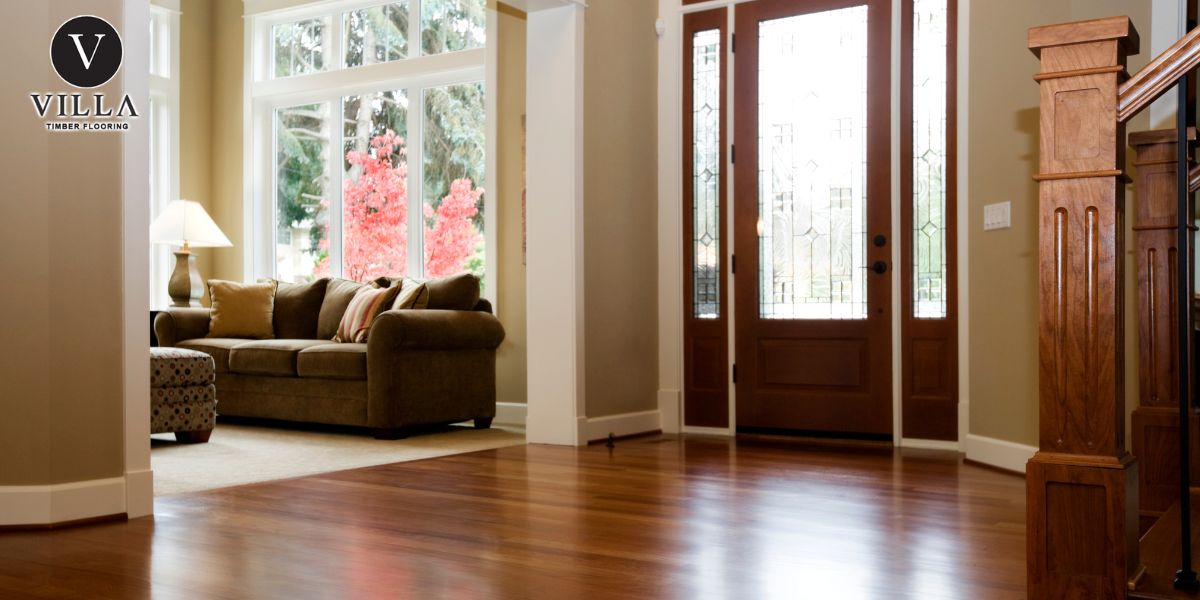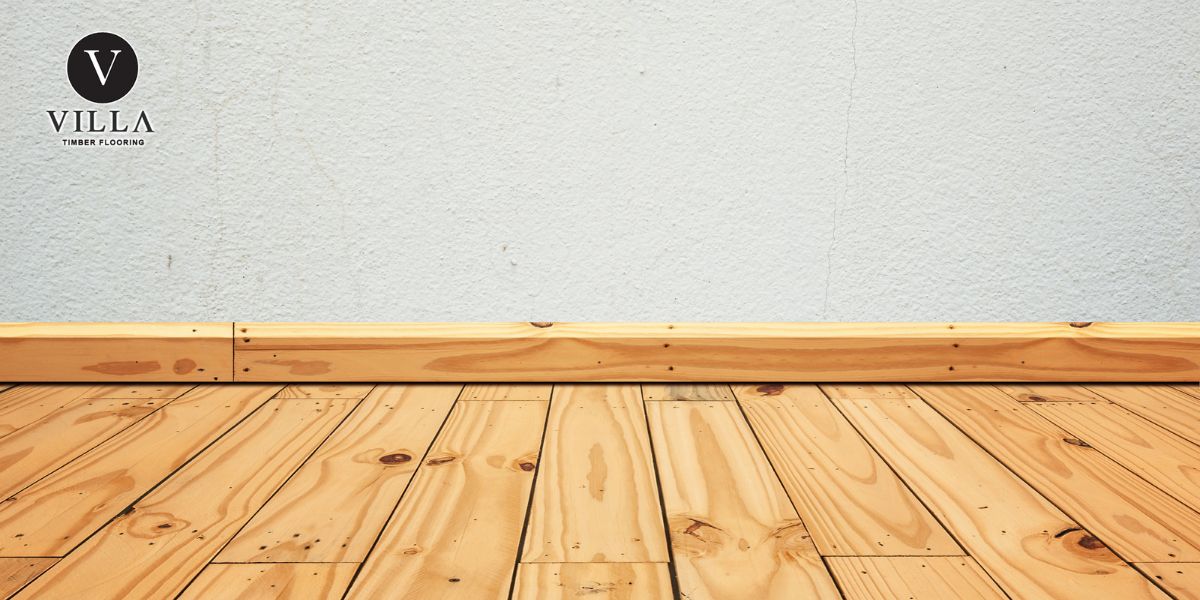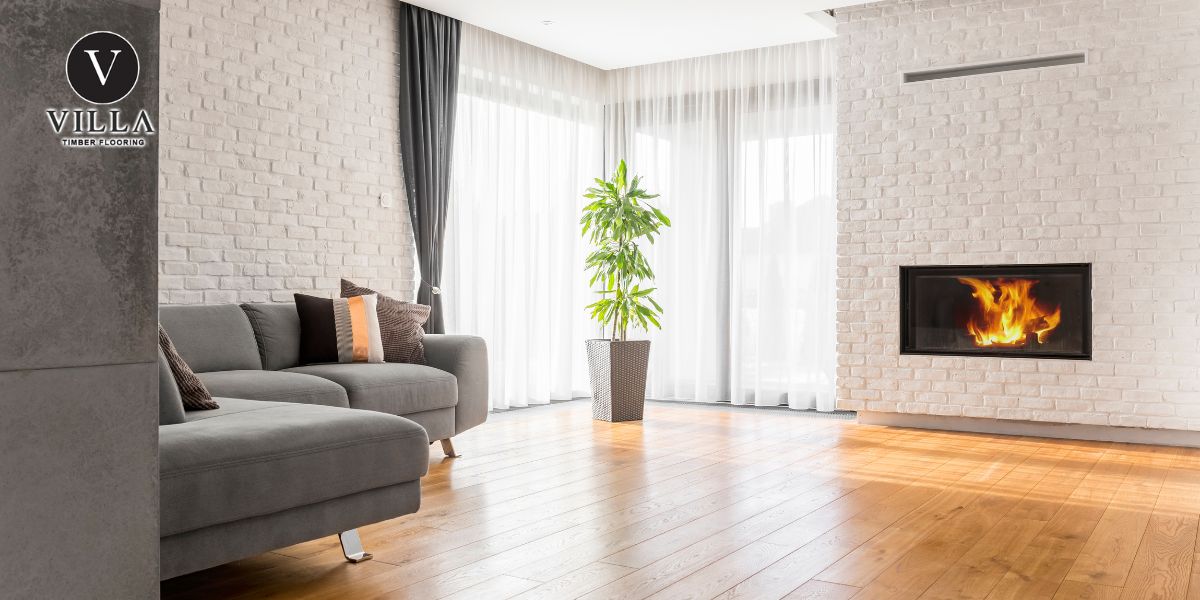Does wood flooring change colour?
Saturday, 31/08/2024
Administrator
298
31/08/2024, Administrator
298
Natural wood flooring is a popular choice for interior decoration due to its natural beauty, durability, and excellent sound insulation, offering a warm and luxurious feel to living spaces. But does natural wood flooring change colour over time? Timber Villa would like to explore this question in the following article.
1. Factors Affecting the Colour of Wood Flooring
The colour of natural wood flooring is influenced by several factors beyond just the type of wood. Here are some key factors:
1.1 Type of Wood
Each type of natural wood has its unique colour and grain pattern. For instance, oak is typically lighter in colour compared to pine or walnut. Understanding the natural colour of different wood types can help you make a choice that complements your home’s design style.
1.2 Manufacturing Process
The manufacturing process of natural wood flooring also plays a significant role in determining the final colour. Steps like treatment, staining, or surface finishing can alter the wood's colour. Some manufacturers use chemicals to enhance the colour or protect the wood from environmental impacts.
1.3 Usage Over Time
The colour of wood flooring can fade over time due to exposure to light, dirt, and other external factors. This is especially true in high-traffic areas where the flooring endures significant wear from footwear and furniture.
1.4 Surrounding Environment
The surrounding environment can also impact the colour of wood flooring. Humidity, temperature, and air pollution can affect the oxidation and decomposition processes of the wood, leading to colour changes. High humidity areas may cause mold, while dry areas can make the wood brittle and prone to cracking.

2. Causes of colour Change in Natural Wood Flooring
Natural wood flooring can change colour for various reasons, including:
2.1 Sunlight Exposure
Sunlight is the primary cause of colour changes in natural wood flooring. Prolonged exposure to sunlight and UV rays can cause the wood to fade, become lighter, or develop uneven colouration. UV rays damage the wood's cellular structure, breaking down natural pigments and leading to inconsistent colour patches.
2.2 Exposure to Air and Environment
The surrounding environment affects the colour of natural wood flooring. Humidity, temperature, and air pollution can accelerate the wood's oxidation process. When wood is exposed to air, it often darkens, especially in humid areas. Air pollution can speed up oxidation, with chemicals in the air reacting with the wood and leading to colour changes and reduced durability.
2.3 Usage
Frequent use of the wood flooring can also cause colour changes. High-traffic areas often experience wear from footwear, leading to fading and uneven colour. Scratches and impacts can reveal the underlying wood layer, which may have a different colour, creating an uneven appearance. Dirt and oils from shoes can adhere to the floor, dulling its colour. Regular cleaning can help keep the floor looking fresh and vibrant.
2.4 Oxidation
Oxidation is a natural process that occurs in wood when exposed to air, causing colour changes over time. Humidity plays a significant role in the rate of oxidation; high humidity accelerates the colour change, while a dry environment slows it down. To manage this, consider using a dehumidifier or air conditioner to maintain stable humidity levels, protecting the wood floor and improving indoor air quality.
2.5 Improper Maintenance
Improper maintenance can lead to colour changes in natural wood flooring. Using the wrong chemicals and neglecting regular cleaning can damage the wood's surface. Many people use harsh chemicals for cleaning, which can destroy the finish and alter the wood's colour. It's best to choose cleaning products specifically designed for natural wood floors. Regular cleaning is essential to maintain the floor's appearance. Wiping down the floor at least once a week and performing routine maintenance will help extend its lifespan.

3. 5 Ways to Protect Wood Flooring from Colour Changes
To protect your natural wood flooring from colour changes, consider the following effective preventative measures:
3.1 Protect from Direct Sunlight
The best way to prevent wood flooring from fading is to avoid direct sunlight exposure. Curtains can help control light and block UV rays; consider using blackout or sun-blocking curtains. Smart furniture placement can also protect the floor; for example, placing large items like sofas in sunny spots can shield the wood.
3.2 Adjust Lighting
Adjusting lighting in your living space is key to protecting natural wood flooring. LED lights do not emit heat like traditional bulbs and are less harmful to the floor. Consider replacing fluorescent or incandescent bulbs with LEDs to reduce light impact. Installing dimmers allows you to adjust brightness levels, protecting the wood floor while creating a cozy atmosphere.
3.3 Use Protective Products
Using protective products on wood flooring is essential to keep the colour vibrant. Many UV-resistant products can protect wood floors from sunlight. Consult an expert to choose the right product. Maintenance oils are also a good option to keep the wood surface shiny and prevent fading. Regular application is necessary to protect the floor from external influences.
3.4 Ensure Proper Ventilation
Ventilation plays a crucial role in preventing colour changes in natural wood flooring. A good ventilation system helps maintain stable humidity, reducing the risk of oxidation and colour changes. You can install fans or open windows to create airflow. In high-humidity areas, consider using a dehumidifier to control moisture levels, protecting the wood floor and enhancing family health.
3.5 Avoid Impacts and Scratches
Avoiding impacts and scratches is a good way to protect natural wood flooring from discolouration. Using rugs in high-traffic areas will reduce wear and tear on the floor. Opt for soft rugs for the best protection. Encourage family members to remove shoes before entering the house to keep the wood floor clean and minimize the risk of scratches.

By understanding the factors that affect wood flooring colour, the causes of colour changes, and applying preventive measures, you can keep your wood floor looking beautiful and durable for years to come. We hope this article provides you with valuable knowledge and experience in caring for and maintaining your natural wood flooring. If you're interested in purchasing high-quality, affordable natural wood flooring, contact Timber Villa for professional service.
VILLA TIMBER FLOORING & RENOVATION PTY LTD (AUSTRALIA)
Tel: (03) 9191 9898
Mobile: 0434 331 642 (Quang) - 0422 879 868 (Vinh Pham)
Email: inquiry@timbervilla.au
Address: 298 Canterbury Road, Surrey Hills, VIC 3127
VILA WOODEN FURNITURE JOINT STOCK COMPANY (VIET NAM)
Address: 133 Nguyen Nhan, Hoa Tho Dong Ward, Cam Le District, Da Nang City, Vietnam
Hotline: 0905 612 637
Tax: 0401929279
Email: inquiry@timbervilla.au
-
 What is Thermally Modified Wood Flooring? Advantages and Disadvantages09/11/2024
What is Thermally Modified Wood Flooring? Advantages and Disadvantages09/11/2024 -
 Use the correct rubber underlay for your wood floor installations09/11/2024
Use the correct rubber underlay for your wood floor installations09/11/2024 -
 Cost To Install Wood Flooring09/11/2024
Cost To Install Wood Flooring09/11/2024 -
 5 Simple Steps to Install Herringbone Wood Flooring09/11/2024
5 Simple Steps to Install Herringbone Wood Flooring09/11/2024 -
 Kaindl Imported Wood Flooring – A Premium Choice for Your Home05/11/2024
Kaindl Imported Wood Flooring – A Premium Choice for Your Home05/11/2024 -
 Choosing the best Malaysian wood flooring for your home05/11/2024
Choosing the best Malaysian wood flooring for your home05/11/2024 -
 How to Choose Bedroom Flooring05/11/2024
How to Choose Bedroom Flooring05/11/2024 -
 Exploring Premium Black Core Wood Flooring05/11/2024
Exploring Premium Black Core Wood Flooring05/11/2024 -
 Exploring Patterned Wood Flooring29/10/2024
Exploring Patterned Wood Flooring29/10/2024 -
 Comparison of Black Core and Green Core Industrial Wood Flooring29/10/2024
Comparison of Black Core and Green Core Industrial Wood Flooring29/10/2024




















